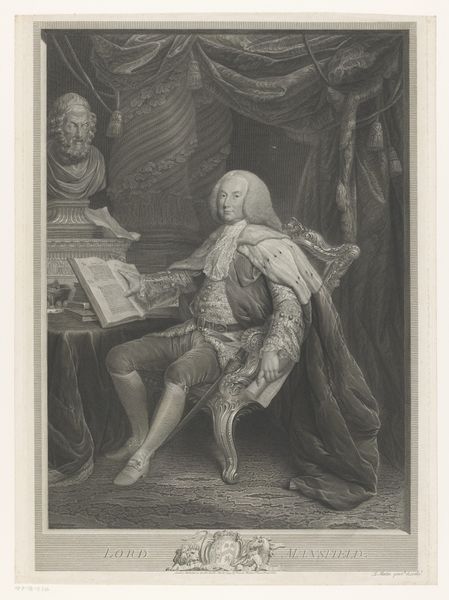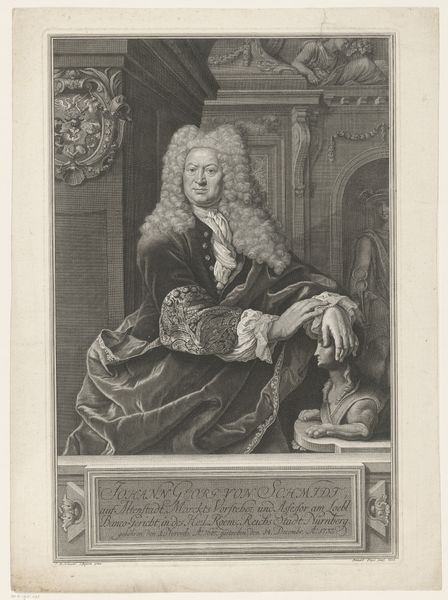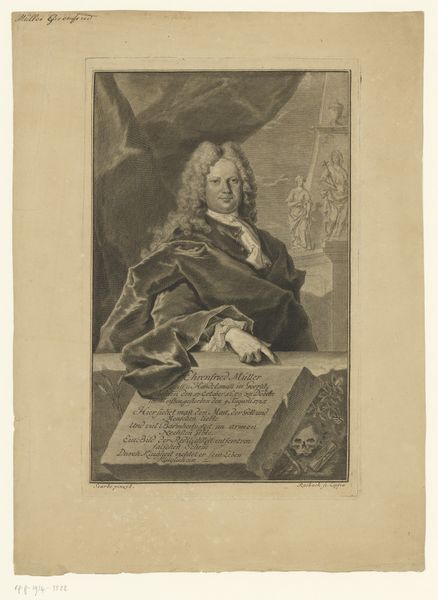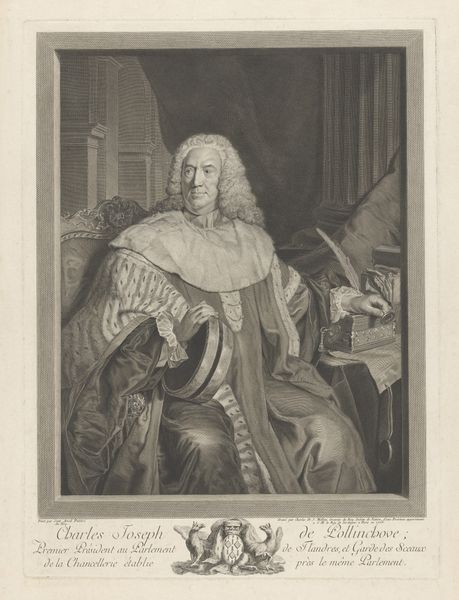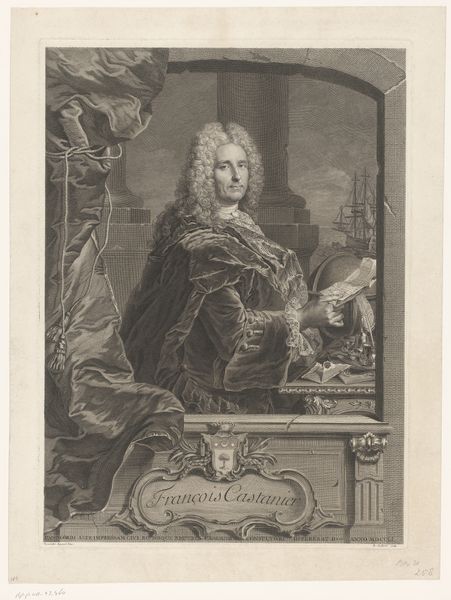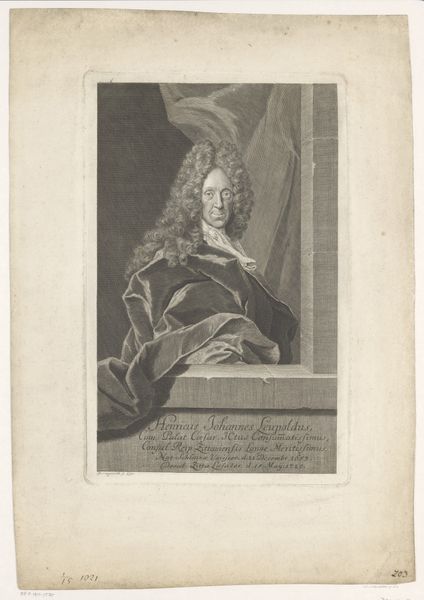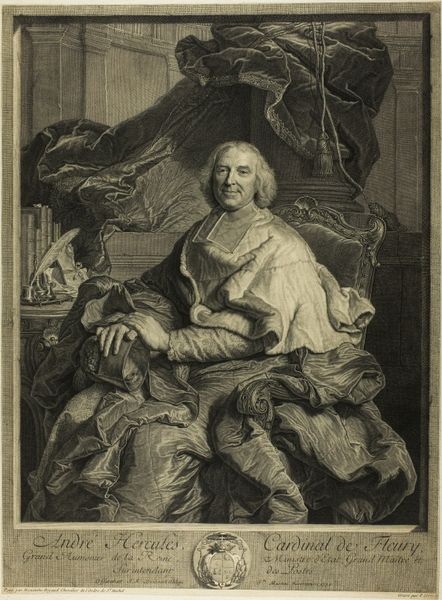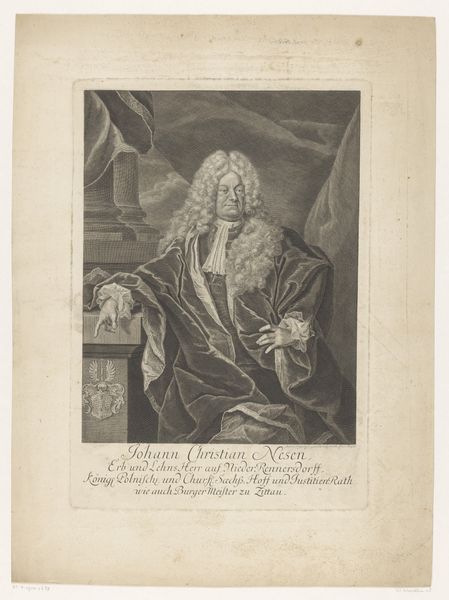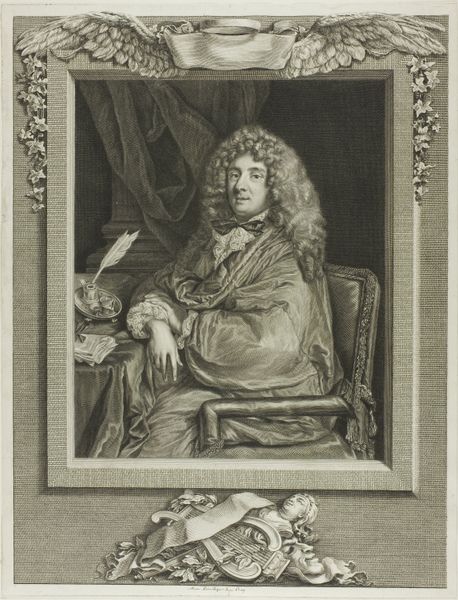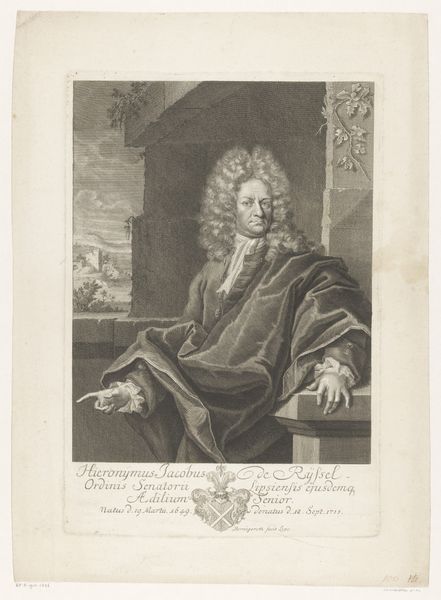
Dimensions: height 504 mm, width 355 mm
Copyright: Rijks Museum: Open Domain
Curator: Before us hangs "Portret van Charles Pratt Camden," a 1766 engraving by Johann Gottfried Haid, housed right here at the Rijksmuseum. It immediately strikes me as…well, austere, almost imposing. What's your initial read? Editor: I find the composition quite conventional for its time, really. But the soft, velvety texture achieved through engraving gives the subject an unexpected vulnerability. You see the weight of power, yes, but also perhaps a weariness beneath the powdered wig. Curator: Absolutely. Think about the labor involved. Haid, a master engraver, translated paint strokes into meticulous lines etched onto a copper plate. Each tiny mark contributes to the overall impression. Did he have assistants? What was their role and status in the creative process? How many impressions of the print exist and what accounts for its variations? Those details would paint a richer picture for understanding how this work achieved its historical circulation. Editor: Considering Camden's role as Lord Chancellor during a period of immense political upheaval, particularly leading up to the American Revolution, the books on his desk, the columns and sky, even his gaze all communicate a carefully constructed image of authority. But also an ideal of "enlightened" governance. We must consider how deeply intertwined his position was with issues of colonial oppression, even if those details are elided by the artist here. Curator: Precisely. Engravings, distributed widely, functioned as propaganda, as branding, if you will. Each one made through Haid’s press had to perform consistently. He might, and likely did, repeat steps multiple times throughout the engraving procedure; therefore accounting for some variations, while creating the possibility for wide dissemination to his wealthy audience. Editor: Right, this portrait doesn't merely depict an individual, but serves as a commentary on 18th-century power structures and the visual mechanisms that helped solidify them. I wonder, how did those being governed respond to being served a very specific idea of governance through a printed material object such as this? Curator: Indeed. It provokes thought, beyond just aesthetic enjoyment, prompting questions about artistic production. The social functions and networks of power inherent in something as ‘simple’ as a printed image are definitely not so simple to unpack! Editor: Exactly. And it’s precisely that intersection – art, social justice, material culture, and critical questioning - that keeps me captivated by historical art. Curator: Agreed. Each material tells such a complicated story to discover!
Comments
No comments
Be the first to comment and join the conversation on the ultimate creative platform.
